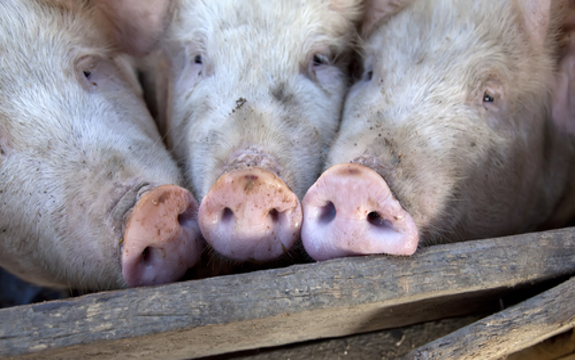 Factory Farms Produce 100 Times More Waste than U.S. Population
Factory Farms Produce 100 Times More Waste than U.S. Population
If
you thought you were a major contributor to pollution, just wait until
you hear this. Factory farms produce 100 times more waste than every
single person in the United States combined. The amount of waste
produced by these factories is in such mass quantities that it is
virtually impossible to clean up properly. Much of this waste is dumped
into the water supply, drastically increasing overall water pollution as
well as contributing to the pollution found in drinking water.
Back in 2008 the Environmental Protection Agency (EPA) made a
decision that affected many factory farms. They stated that any confined
animal feeding operation (CAFO), also known as factory farms,
“designed, constructed, operated, and maintained in a manner such that
the CAFO will discharge” animal waste must apply
for a National Pollutant Discharge Elimination System (NPDES) permit
under the Clean Water Act. The livestock industry ridiculed this notion.
There have been past rulings concerning this issue that forced
farmers to have a permit to discharge waste and to have a set plan as to
how the waste would be discharged, or they would face civil or criminal
penalties. The 2008 ruling went further with the issue, putting even
more criteria in place to follow.
A ruling on
Tuesday, March 15, 2011 by the Fifth Circuit Court of Appeals, however,
ruled that the EPA has no right to require CAFOs to apply for permits
unless they actually discharge waste. But if a CAFO does in fact
discharge waste, the EPA can then require that CAFO to apply for a
permit.
Nutrients in animal waste cause something known as algal blooms,
which use up oxygen in the water and effectively cause a lack of oxygen
for aquatic life to survive. These lifeless areas are called “dead
zones”. The most notorious of dead zones can be found in the Gulf of
Mexico, where it extended a record 8,500
square miles during the summer of 2002 and stretched over 7,700 square
miles during summer of 2010, and is always fluctuating. Ammonia, a toxic
form of nitrogen released during waste disposal, can be carried via air
over 300 miles before being dumped back onto the ground or into the
water, where it causes algal blooms and fish kills.
The past laws set in place forced CAFOs to apply for a permit and
create a plan to handle the massive amount of waste the animals would
inevitably generate. With this law changing and lowering the standards
at which factory farms are run by, CAFO’s will be able to wait until the
last minute before they decide to dump the waste. Despite the fact that
the EPA will be able to penalize them for such actions, the CAFO’s will
already have done the damage to the environment by ridding their land
of millions of gallons of manure.
The simple fact is that factory farms are causing problems, and are still being widely used today.
- The number of hog farms in the United States has dropped from 650,000 to 71,000 over the past 30 years, however, the number of hogs remains nearly the same.
- In 1999, only 2% of hog farms in the U.S. accounted for more than 46% of the total number of hogs, as reported by U.S. Department of Agriculture.
- 10 total companies produce over 90% of the nation’s poultry.
Additional sources:
Source: http://naturalsociety.com/factory-farms-produce-100-times-waste-us-population/#ixzz1wUL4Muzu
No comments:
Post a Comment